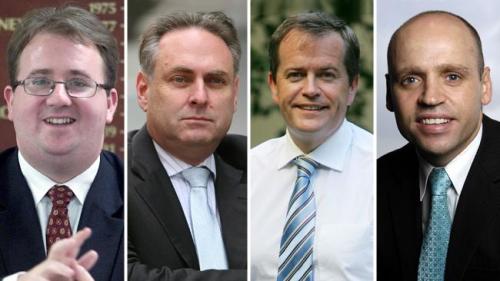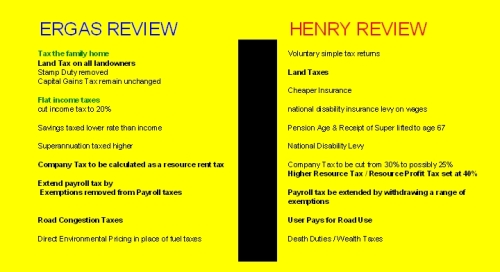Courtesy of Fairfax journalist and reporter @latikambourke the things recommended by the Henry Tax Review but ruled out by the incumbent Rudd-Gillard-Swan government are:
- Alcohol Tax changes
- State stamp duty changes
- Restoring fuel tax indexation
- Changes to negative gearing
- Changes to capital gains taxes
- Luxury Car Tax abolition
- Charging public housing tenants market rents
- Including the family home in means tests
- Require parents to work when their youngest child turns 4.
These have all been ruled out – most with good reason in my opinion. Peter Martin also mentions we should not confuse Swan’s proposals with the recommendations of the Henry Review which is exactly what I did here with the superannuation proposals.
ALCOHOL TAXES
Taxes on alcohol should be set to address the spillover costs imposed on the community of alcohol abuse, when this delivers a net gain to the community’s wellbeing and is more effective than alternative policies. Raising revenue is a by-product, not the goal, of taxing alcohol. The tax rate should be based on evidence of spillover costs, and levied on a common volumetric basis across all forms of alcohol, regardless of place, method or scale of production.
A common volumetric tax on alcohol would better address social harm through closer targeting of social costs. A rate based on evidence of net social costs would help balance the benefits from alcohol consumption with its social costs. Moreover, by removing the distinction between different manufacturing processes, the compliance and administration cost of the existing excise system would be reduced.
The transition to a common alcohol tax should be phased in over a longer term, to ensure that producers and consumers have time to adjust to the changes.
After reading that recommendation in the Henry Review I do not see anything particularly wrong with that proposal.
PROPERTY TAXES
The Government has opted for no changes in stamp duty across the States because it would be replaced by a land tax. This is a complex regulation to change as it involves federalism and I imagine would have to be subject to discussion at a COAG meeting.
Also to put a bit of a personal spin on it if it’s a typical land (value) tax which in theory assists regional and rural areas (my area) but reality tells me they’ll hold revenue for that back as a sweetener for something else, most likely in a high density urban area.
FUEL
Revenue from fuel tax imposed for general government purposes should be replaced over time with revenue from more efficient broad-based taxes. If a decision were made to recover costs of roads from road users through fuel tax, it should be linked to the cost of efficiently financing the road network, less costs that can be charged directly to road users or collected through a network access charge. Fuel tax should apply to all fuels used in road transport on the basis of energy content, and be indexed to the CPI. Heavy vehicles should be exempt from fuel tax and the network access component of registration fees if full replacement charges are introduced.
I do not and cannot agree with heavy vehicles being exempt from fuel tax, i.e. trucks, they are the ones that have the most road use and thus cause the most damages to roads which make the roads dangerous and they are to be exempt from a fuel tax. It just does not make sense. Do you think the goods on the trucks will get any cheaper or do you think the companies, etc, will pocket the extra cash? My reasoning here is similar to the opposition of the abolition of the luxury car tax.
Fuel tax will hit those that live the farthest from metropolitan regions than those that live on the metro doorsteps where the median income is much higher. It does not strike me as a sensible proposal.
LUXURY CAR TAX
People with the same economic means will pay different amounts of tax depending on their tastes. Wealthy people with modest tastes pay less than wealthy people with a preference for luxury goods. Australia’s current luxury tax, the luxury car tax (LCT), is particularly arbitrary in its impact. It falls on people with a preference for relatively expensive cars, but not on those with a preference for diamonds, fur coats or yachts.
Luxury taxes should not be used to raise revenue. They are inefficient because of their narrow base. Taxing luxury goods is also an ineffective and arbitrary means of redistributing economic resources.
This is one of the sillier things I have seen. A little extra tax will not hurt those accustomed to a certain lifestyle, a little extra tax can mean life and death for those just trying to afford the next payment on their first owner-occupied home (and I do not mean to imply that is proposed, it is not!). Rather than abolish the tax, perhaps they should also tax luxury diamonds, luxury fur coats and luxury yachts to keep it progressively equitable.
PUBLIC HOUSING CHARGED MARKET RENTS
I am paraphrasing a little here but public housing has the potential to lock people in to depressed areas and to discourage moving for work. Thus the Henry Review recommends charging market rents and lifting rental assistance offered by government agencies considerably and indexing it to consumer inflation. Provided the rental assistance is lifted to a sufficient level to accommodate adequate housing in ALL regions I can approve of this recommendation.
FAMILY HOME MEANS TEST
It seems this is not in the Henry Review as all, as it recommends that the owner-occupied housing remain exempt from means tests and I would consider owner-occupied housing the family home.
RETURNING TO WORK WITH CHILD AGED FOUR
While the employment rate of single parents has increased, there is still a sizeable gap between their employment participation rate and that of partnered mothers, especially while the children are young (see Chart F1-7). Where there is a child younger than four there is a 25 percentage point gap; for a child aged over four and up to sixteen the gap is 8 percentage points. There is no gap between employment rates of single parents and partnered mothers when the youngest child reaches 16 years of age.
These differences may to some extent reflect selection biases (as indicated by lower average wage rates and education levels for single compared to partnered women). When single parents do work they have higher median hours of work than secondary earners in couple families. However, it is also the case that Australia’s assistance to single parents is among the most generous in the OECD (Whiteford 2009, p. 49). Also, Australia has the fourth-highest joblessness rate in the OECD for households with children, and this joblessness is concentrated among single-parent families (Whiteford 2009, p. 57). Another policy consideration is the growing evidence that long periods out of the workforce reduce the probability of eventual employment and harm both single parents and their children.
Recommendation 85: Income support arrangements for parents should support and encourage participation in work while maintaining adequate levels of assistance to families. As a condition of payment parents should be required to look for part-time work once their youngest child turns four. Parents would receive supplements as follows:
- For couples and single parents with a youngest child under six years, the amount of the supplement should be set such that the total support for single parents on income support will be equivalent to the maximum rate of pension. The supplement would be paid through the family payment system.
- For single parents with a youngest child aged six or older, the supplement should be paid at a substantially lower rate through the family payment system.
- For couples with a youngest child aged six years or older, the lower rate supplement should be paid through the income support system.
There should be no necessity in Australia for both parents of a child to work if one of the couple prefers to be a stay-at-home housewife/househusband. The system should not punish couples that seek to live as they seek fit provided at least one is in paid employment.
Whilst it is recommended for single mothers to return to work as soon as feasible because of the difficulties of finding work the longer you are unemployed; they should not be forced to at the age of four. The start of schooling age, five/six is much more acceptable.
In summary I support the current government’s stance on opposition to abolition of the luxury car tax, fuel tax, land tax. I also recognise the complexity of politically passing on some of these recommendations as some involve the removal of state based taxes which means a co-operative federalist approach is required. This would most likely occur at a COAG meeting. I also support their opposing stance to parents returning to work when their children turn four but with caveats. I can support the Henry’s Tax Review recommended changes to the Alcohol Tax, it is just common sense.




